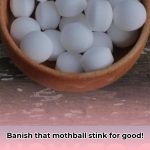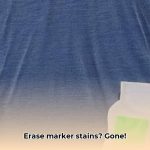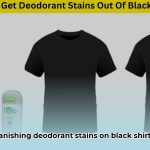Fleas in your carpet? It’s a common problem, but definitely not one you have to live with. This guide provides a comprehensive, step-by-step plan to eradicate these pests and prevent future infestations.
Understanding the Enemy: Flea Life Cycle
Before tackling the problem, it’s helpful to understand the flea life cycle: eggs, larvae, pupae, and adults. Adult fleas lay eggs (often on your pets), which fall off and hatch into larvae in your carpet. These larvae feed on organic debris, then spin cocoons to become pupae. Finally, adult fleas emerge, ready to feast. This cycle can take weeks or months, depending on factors like temperature and humidity. Understanding this helps target treatments effectively.
Step 1: Vacuuming – Your First Line of Defense
Your vacuum is a powerful weapon against fleas. Thorough vacuuming removes fleas in all life stages. Focus on pet-favorite spots, under furniture, and along baseboards. Empty the bag or canister immediately afterward, preferably outside in a sealed trash bag. Daily vacuuming is ideal during heavy infestations; weekly is good for maintenance.
Step 2: Steam Cleaning – Turning Up the Heat
Steam cleaning delivers a knockout punch to fleas. The high temperature eliminates all life stages. Renting a steam cleaner or hiring a professional, especially after other treatments, is a worthwhile investment for thorough eradication.
Step 3: Insecticides – Targeted Elimination
Insecticides can be effective, but use them wisely. Look for products containing both an adulticide (kills adult fleas) and an insect growth regulator (IGR), which prevents eggs and larvae from developing. Always follow product instructions and prioritize safety. Ventilate the area well after application. Rotating different insecticides may reduce the risk of flea resistance.
Step 4: Natural Remedies – Gentler Approaches
For a more natural approach, consider these options:
- Diatomaceous Earth (Food Grade): This powder dehydrates fleas. Sprinkle liberally, let it sit for a day or two, then vacuum thoroughly.
- Baking Soda and Salt: These have a similar, though less potent, drying effect.
- Borax: Another drying agent, but use cautiously around children and pets due to potential toxicity.
- Natural Sprays: Sprays with lemon, vinegar, or flea-repelling herbs may deter fleas, though scientific evidence is still emerging.
Step 5: Flea Traps – Monitoring and Reducing
While not a primary extermination method, flea traps can help reduce adult fleas and gauge infestation severity. A bowl of soapy water near a light source attracts and traps fleas.
Step 6: The Integrated Approach – Combining Methods for Maximum Impact
The most effective flea control strategy combines multiple methods. Vacuum, steam clean, use an insecticide with an IGR, and follow up with natural remedies for maintenance. This comprehensive approach targets all life stages and helps prevent future infestations.
Step 7: Prevention – Keeping Fleas Out
Once you’ve eliminated fleas, prevention is key:
- Pet Treatments: Use vet-recommended flea preventatives regularly.
- Bedding Hygiene: Wash pet bedding frequently in hot water and dry on high heat.
- Regular Vacuuming: Continue vacuuming, especially in high-traffic areas.
- Yard Maintenance: Keep your yard trimmed and free of debris to minimize breeding grounds.
Identifying a Flea Infestation
Early detection is crucial. Here’s what to look for:
- Flea Dirt: These black specks (flea droppings) turn reddish-brown on damp paper.
- Adult Fleas: Tiny, dark, jumping insects.
- Pet Behavior: Excessive scratching, biting, licking, restlessness, or hair loss.
- Human Bites: Small, red, itchy bumps, often clustered on lower legs.
Gauging Infestation Severity
Use these methods to assess the extent of the problem:
- White Sock Test: Walk around in white socks; fleas will jump onto them.
- Flea Comb: Use on pets and carpets to find adult fleas and flea dirt.
- Visual Inspection: Examine carpets, especially pet-favorite spots, for fleas, flea dirt, and larvae.
Factors Influencing Infestation Severity
Several factors can worsen infestations:
- Outdoor Pets: Increased exposure to fleas.
- Carpet Type: Thick carpets offer better hiding places.
- Previous Infestations: Untreated or improperly treated infestations can resurge.
Summary Table: Flea Control Methods
| Method | Effectiveness | Safety (Pets/Kids) | Cost |
|---|---|---|---|
| Vacuuming | High | Very Safe | Low |
| Steam Cleaning | Very High | Safe | Moderate |
| Insecticides | High | Use with Caution | Moderate |
| Diatomaceous Earth (Food Grade) | Moderate | Relatively Safe | Low |
| Baking Soda/Salt | Low-Moderate | Safe | Low |
| Borax | Moderate | Use with Caution | Low |
| Natural Sprays | Low | Safe | Low |
| Flea Traps | Low | Safe | Low |
This table provides a quick comparison of various methods. The best approach often involves a combination tailored to your situation. If you’re unsure, consult a pest control professional or veterinarian. They can help you create a personalized plan to eliminate fleas and keep them from returning. While current knowledge provides effective strategies, ongoing research may lead to even better solutions in the future. Remember, consistent vigilance and preventative measures are essential for maintaining a flea-free home.
- How to Get Motor Oil Out of Clothes: Proven Methods & Step-by-Step Guide - April 25, 2025
- How to Get Mothball Smell Out of Clothes: A Complete Guide - April 25, 2025
- How to Get Highlighter Out of Clothes: Easy & Effective Stain Removal Guide - April 25, 2025










